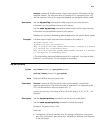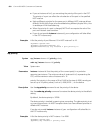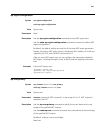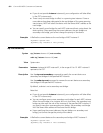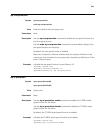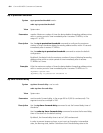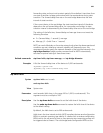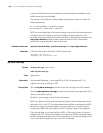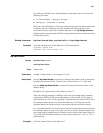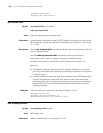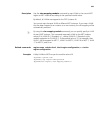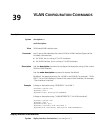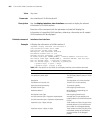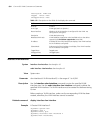
627
The setting of the hello time, forward delay and max age timers must meet the
following formulae.
■ 2 × (forward delay - 1 second) ƒ max age
■ Max age ƒ 2 × (hello time + 1 second)
MSTP can work effectively on the entire network only when the above-mentioned
conditions are met; otherwise, network instability will frequently occur. We
recommend that you specify the network diameter in the stp bridge-diameter
bridge-number command and let MSTP automatically calculate an optimal setting
of these three timers.
Related commands: stp timer forward-delay, stp timer hello, and stp bridge-diameter.
Examples # Set the max age timer of the device to 1,000 centiseconds.
<Sysname> system-view
[Sysname] stp timer max-age 1000
stp timer-factor
Syntax stp timer-factor number
undo stp timer-factor
View System view
Parameters number: Timeout factor, in the range of 1 to 20.
Description Use the
stp timer-factor command to configure the timeout time of the device
by setting the timeout factor. Timeout time = timeout factor × 3 × hello time.
Use the
undo stp timer-factor command to restore the timeout factor to the
default setting.
By default, the timeout factor of the device is set to 3.
After the network topology is stabilized, each non-root-bridge device forwards
configuration BPDUs to the surrounding devices at the interval of hello time to
check whether any link is faulty. Typically, if a device does not receive a BPDU from
the upstream device within nine times the hello time, it will assume that the
upstream device has failed and start a new spanning tree calculation process.
In a very stable network, this kind of spanning tree computing may occur because
the upstream device is busy. In this case, you can avoid such unwanted spanning
tree computing by lengthening the timeout time (by setting the timeout factor to
4 or more). We recommend that you set the timeout factor to 5, or 6, or 7 for a
stable network.
Examples # Set the timeout factor of the device to 7.



